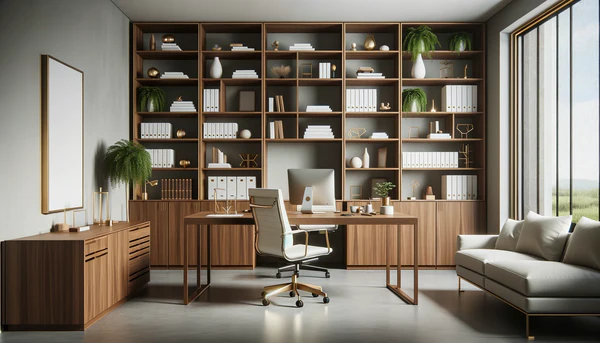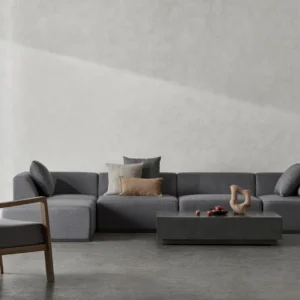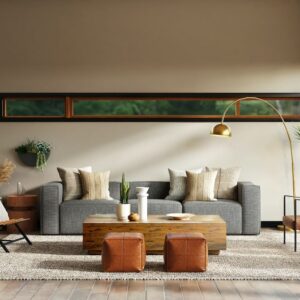Creating an efficient, comfortable, and aesthetically pleasing workspace is essential for productivity and well-being. Whether you’re furnishing a home office or a corporate environment, selecting the right office furniture plays a crucial role in shaping the workspace’s functionality and atmosphere. This guide will walk you through the key considerations and top choices for office furniture to help you create an ideal work environment.
Understanding Your Office Needs
Before purchasing office furniture, it’s important to assess your specific needs:
- Space: Measure your office space to understand what furniture will fit comfortably. Consider room for movement, storage, and any additional equipment.
- Functionality: Identify the primary tasks performed in the office. This will help determine the type of furniture needed, such as desks for computer work, storage for files, or conference tables for meetings.
- Aesthetics: Consider the design and decor of your office. Furniture should complement the overall aesthetic and create a professional, welcoming environment.
Essential Office Furniture Pieces
Desks: The centerpiece of any office, desks come in various styles to suit different needs:
- Executive Desks: Large, often ornate, and suitable for managerial positions. These desks provide ample workspace and storage.
- Writing Desks: Simple and sleek, ideal for minimalistic setups or home offices with limited space.
- Standing Desks: Adjustable desks that allow users to alternate between sitting and standing, promoting better posture and health.
- L-Shaped Desks: Perfect for corner spaces, offering extensive surface area for multitasking.
Office Chairs: Ergonomics is key when selecting an office chair:
- Ergonomic Chairs: Designed to support posture and reduce strain, these chairs are adjustable and feature lumbar support.
- Executive Chairs: Often larger and more cushioned, providing a luxurious feel suitable for higher-level executives.
- Task Chairs: Versatile and functional, suitable for general office use and adaptable to various workstations.
Storage Solutions: Keep your workspace organized with efficient storage:
- Filing Cabinets: Essential for storing documents and files, available in vertical or lateral designs.
- Bookcases: Ideal for storing books, binders, and decorative items, adding both function and style.
- Shelving Units: Versatile storage solutions that can be customized to fit different office needs.
Conference Tables: Essential for meetings and collaborative work:
- Boardroom Tables: Large and formal, suitable for executive meetings.
- Round Tables: Promote equality and open discussion, ideal for smaller meetings.
- Modular Tables: Flexible configurations that can be adjusted based on meeting size and requirements.
Reception Furniture: Create a welcoming first impression with stylish and functional reception furniture:
- Reception Desks: The focal point of the reception area, combining aesthetics with practical features like storage and workspace.
- Seating: Comfortable and stylish chairs or sofas for visitors, enhancing the waiting area’s appeal.
Home Office Furniture: Tailored to fit the unique needs of home-based work environments:
- Compact Desks: Space-saving designs that fit into smaller home spaces.
- Multifunctional Furniture: Pieces that serve multiple purposes, such as desks with built-in storage or fold-out options.
Materials and Durability
Wood: Classic and sturdy, wood furniture adds a touch of elegance and warmth to the office. Consider solid wood for durability and veneer for a more affordable option.
Metal: Offers a sleek, modern look and is highly durable. Often used for frames and supports in desks and chairs.
Laminate: Budget-friendly and versatile, laminate furniture is available in a variety of finishes and is easy to maintain.
Leather and Fabric: Used for office chairs, leather offers a luxurious feel, while fabric provides comfort and breathability.
Tips for Selecting Office Furniture
- Ergonomics: Prioritize ergonomic design to ensure comfort and reduce the risk of strain or injury. Adjustable features are crucial for chairs and desks.
- Quality: Invest in high-quality furniture that will withstand daily use and offer long-term value.
- Flexibility: Opt for modular and adjustable furniture to accommodate changing needs and workspace configurations.
- Style: Choose furniture that reflects your brand’s image and creates a cohesive look throughout the office.
- Budget: Balance quality and cost by setting a budget and prioritizing essential pieces.
Final Thoughts
Choosing the right office furniture is essential for creating a productive, comfortable, and aesthetically pleasing work environment. By assessing your needs, prioritizing ergonomics, and selecting high-quality, stylish pieces, you can transform your office into a space that enhances productivity and well-being. Whether you’re setting up a home office or furnishing a corporate workspace, the right furniture makes all the difference in fostering a positive and efficient work atmosphere.







